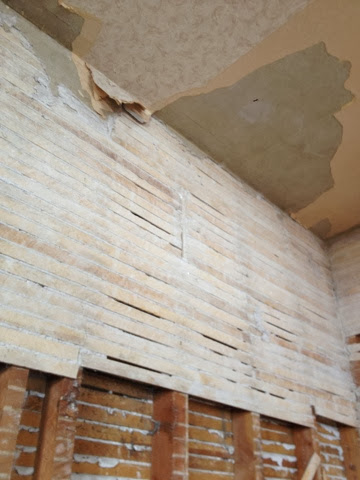Several times throughout the project so far, a contractor has said "you know you've got this big hole here, it's not too late to just push the house in and start over." And they're only partly joking. And believe me, there were times I nearly considered it.
In order to maintain the structural integrity of the existing home while building the new addition we've had six separate concrete pours with at least a few more to go.
Most recently we took down two dirt pillars that we had left in place to support the old house while we poured most of the basement walls. After the dirt was removed we extended two walls, one of which was formed on both sides and one which was single-formed.
The dirt being removed.
We had originally planned to do a lot of bracing to support the existing house, but the ground was so frozen that combined with the new concrete walls we felt like that was enough support to go ahead and remove the leftover dirt.
This section of dirt was too far inside the basement for the excavator to reach so we removed the rocks and very frozen dirt with sledgehammers, picks, and a 50 pound air jackhammer. It took about a combined total of 9 hours. We were just a little tired afterward. Ok, extremely worn out is more like it.
Next came the footing forms.
Getting the concrete to the forms is always exciting.
This footing took the 19 foot boom on the cement truck, another chute and lots of shoveling.
After the footings set it was time for the walls.
It's a long way down!
The opposite wall was the single-formed one (only one side is formed against an existing wall or embankment). Single-formed walls are difficult to do and require lots of bracing. The pressure of the concrete can easily cause the forms to blow out, letting wet concrete flow out all over the place and making a huge mess. We now know this from experience. That's what happened to this wall. Unfortunately we didn't get any photos of the blow-out, but it was as bad as you imagine. It happened right after the wall was completely poured.
This photo shows the forms being put back up around the cement that actually stayed inside the first set of forms.
The new set of forms with all the braces. The second time around we braced the heck out of it! Lag bolts on each side and all across the bottom and tons of wood and metal braces.
Because of the blow-out we had to move the wall out another four inches. It ended up being a huge, nearly 18 inches thick.
But in the end. . . It worked! And the house didn't fall down.








































